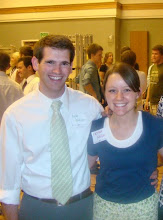Today Kyle took a train ride across the entire city of Hyderabad. He was off to meet a professor named Dileep Kumar at the University of Hyderabad. And it was quite the journey.
Usually we ride rickshaws everywhere, and that’s an experience all in itself. That’s also how the day began. Let us give you a lesson, should you ever find yourself in Hyderabad. You wave one of our friendly-looking (sometimes pimped-out), three-wheeling, bus dodging rickshaw friends down (or they kind of creepily saddle over to the side of the road and peek out at you hoping you want a ride), and then try to communicate where you’re going. Today it was, “Secunderabad train station?” A genuine head bobble responds, meaning this rick driver registered my thick American accent. Then the bargaining process starts. “How much?” “50 rupee.” If it’s ridiculous (which this kind of was), you can kind of laugh or just start walking off to see how willing the driver is to lower his quote. Or you can just jump to a lower price. “No. Twenty!” Then it’s in his court. He can drive off in a huph, or… “Fourty!” “Thirty!” Another head bobble, and the journey’s started!
Indian roads are fantastic. You can get a good idea of what that means with the following quote from the US embassy about them…
Travel by road is dangerous... Buses, patronized by hundreds of millions of Indians, are convenient... However, they are usually driven fast, recklessly, and without consideration for official rules of the road. Accidents are quite common. Trains are somewhat safer than buses, but train accidents still occur more frequently than in developed countries.
On Indian roads, the safest driving policy is to assume that other drivers will not respond to a traffic situation in the same way you would in the United States. For instance, buses often run red lights and merge directly into traffic at yield points and traffic circles. Cars, auto-rickshaws, bicycles and pedestrians behave only slightly more cautiously. Indian drivers tend to look only ahead and often consider themselves responsible only for traffic in front of them, not behind or to the side. Frequent use of one's horn to announce presence is both customary and wise. It is usually preferable to have a licensed experienced driver who has a "feel" for road and driving conditions.
Rickshaws dodge and dive in and around each other, and giant buses often converge on your little rickity rickshaw like a hammer and anvil coming together. We’ve had a few experiences where the light to the front and back of us was narrowing quickly, and all of a sudden you’re not sure if you’ll make it through in time. Seen Indiana Jones before? The part where the boats are coming together and they almost get crushed. Yep.
Anyways, add to countless breath-taking near-death experiences the fact that the air is so polluted and hot that it’s hard to breath at all, and you wonder how you ever make it anywhere alive. Really, though, they’re now tons of fun and we’re not even phased anymore. The way road rules work here is that they don’t, so people have to trust each other as drivers instead of trusting the law’s ability to keep people between the (nonexistent) lines painted on the pavement. This picture is just one, relatively calm and peaceful, intersection your rickshaw will cross on a normal day's commute.
Anyways, this is getting long. You'll have to catch the rest of the amazing trip in the next post!



No comments:
Post a Comment